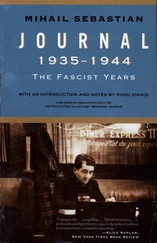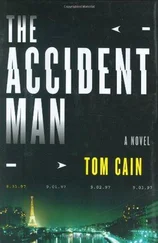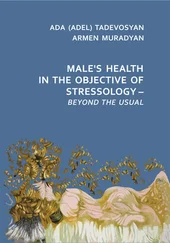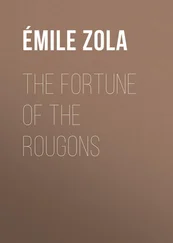A few days later, and behind schedule, the Eclair newsreel arrived, in which the King and Queen’s visit to the Romanian pavilion was filmed at greater length. Here Ann was clearly visible, leaning against her painting as though ready to provide explanations. Queen Astrid paused in passing before the painting and appeared to smile at Ann: their white dresses, one beside the other, lit up the whole screen. It didn’t take more than a few seconds, but the images were so clear and were taken face-on so that Paul had time to look her right in the eyes.
Ann’s painting covered almost the entire back wall of the pavilion. It was painted straight onto the wall on dry plaster, something which, so far as Paul knew, Ann had never tried until now. There were two landscapes, a landscape of oil wells and a rural landscape, separated by water that flowed down the middle like a boundary line.
“She was lucky,” Paul was told by the painter he met at the pavilion, and who was showing him through the exhibition. “She was incredibly lucky. Painting water on a fresco is sheer lunacy. And look at how she pulled it off. Look at the depths it has, the clarity!”
In fact, everything in Ann’s work was more certain, more decisive than her usual manner. A few landscape details, some wild flowers, a tiny herd of cattle in the distance, still recalled the showy love of detail of her smaller drawings, but the main lines of the canvas, the black oil derricks, the peasant women in the foreground, were depicted robustly, with calm composure.
Paul came to the pavilion every day in the hope of receiving news. There was a reception desk there, a sort of reading room where mail and Romanian newspapers were delivered. One day he recognized Ann’s writing on a postcard: the card was addressed collectively to “the guys” at the pavilion, with greetings from Ostend. We’re passing through, splendid weather, what’s up with you guys? Next to Ann’s signature was another signature, indecipherable but visibly male.
“Who’s that?” Paul asked.
“Dănulescu, the architect. Don’t you know him? She left with him. I thought I told you that. In his car.”
He didn’t have the courage to ask anything more. What did “she left with him” mean? It was a repellent turn of phrase. It seemed to be equivalent to “she’s living with him,” “she’s sleeping with him.”
He didn’t have the courage to ask, and in fact there was nothing more to ask. Everything was clear at last. He now understood her having left Bucharest without a farewell word, he even understood the very fact of her participation in the exhibition at Liège, where she surely would not have been invited and would not have been entrusted with work of such great responsibility — she was too young, too lacking in experience — had she not been “proposed” by Dănulescu the architect, who was in charge of the pavilion’s interior decoration.
Now, looking again, but with different eyes, at the canvas signed by Ann, he realized how it differed from her usual style. The truth was that the restless Ann he knew had not painted this canvas. If the lines were firm and the colours calm it was because a man had intervened there and taken her hasty hand in his powerful one, directing her in a way that was alert to the full stretch of the landscape, as he might have directed the hand of a child, who has the pencil gripped tight between his fingers but doesn’t know how to write, across the page of an exercise book.
And, as if he had needed a final sign of how things stood, Paul found in that reading room, in a Belgian art magazine, in a special issue published on the occasion of the exhibition, an article by Dănulescu on “Mural Painting in Romanian Monasteries,” accompanied by some drawings and reproductions, in which the prime example given was that of the frescoes at Snagov and, in particular, that descent from the cross that Ann had shown him years ago in the little monastery on the shore of the lake. Among the detailed enlargements was a reproduction of the old man in the background who was stroking his beard with that anxious gesture that Ann had referred to as a “secular” gesture and which Dănulescu now referred to with the same word in his article.
It was impossible that this was a coincidence and it was even less possible that it was Ann who had revealed this detail to the architect, an eminent specialist in mural painting. Much more believable was the possibility that he had originally revealed it to her, but in that case Ann and Dănulescu had known each other for a very long time, and their liaison was probably of long standing, of a longer standing than what until now he had believed to be his love with Ann. He felt betrayed, lied to from the beginning, in his very first memories of her. That same day he left Liège for home.
Autumn had come, and the last late arrivals were returning from their summer holidays. People in Bucharest were shivering with anticipation at the beginning of the season, as the theatres, concert halls and art galleries opened in turn. Ann still hadn’t appeared anywhere. She was certainly in Bucharest, especially now that the exhibition in Liège had closed, but Paul never ran into her. It was true that he was going out little, particularly in the evenings, which, tired from days in court, he was spending at home, reading, listening to music, without feeling any enthusiasm for either the books or the music but happy to have the pretext not to leave his apartment or to see anyone. He felt a longing for the life of a teacher in a provincial high school somewhere in a remote market town without a railway station, without newspapers, whose socializing consisted of playing chess with the teacher of physics and chemistry, a sort of bachelorhood rooted in solitude.
One night he had passed in front of Ann’s building and, more out of habit than curiosity, had lifted his gaze towards her windows: the lights were on. She’s at home , Paul thought, but calmly, without emotion, without any desire to see her, as if he had noticed that it was raining or that it was late.
He spent whole days without even thinking of her, without the slightest memory. It all struck him as distant, remote, relegated forever to the depths of his memory. Sometimes at the office, the girl who answered the telephone would tell him: “Somebody asked for you. A woman’s voice. She didn’t leave her name.” He didn’t even bother to put the question to himself: Could it be Ann? Yes, it could be Ann. And then what?
Even so, he sometimes awoke at night from his dreams with her name on his lips, and felt then, like a sharpening pain, the need to see her — not in order to speak to her, since he had nothing to say to her and felt that any return to the past was impossible — but in order to watch her, even without her knowledge, as he might from a window, as though he were a passerby. Once he had received at the office a visit from the head of a film company and, in the midst of a discussion of a fiscal appeal that the man was bringing forward, Paul had suddenly interrupted him, struck in a flash by a thought: “What do you do with old newsreels?”
The man, not understanding what connection this question might have with his lawsuit, replied in amazement: “Some of them we send right away to head office. Most of them stay in storage at our office. After one or two years we destroy them.”
“Could you find me the Eclair newsreel from last summer, from July? The one with the exhibition at Liège? And if you can find it, could you show it for me somewhere, in a projection room?’
“That’s no problem. We have our own projection room. We just have to find the film in storage. If it’s from July, it might be showing somewhere out in the provinces. There are a few market towns where we send newsreels from a few months, or even a year ago, for a pittance…”
Читать дальше












